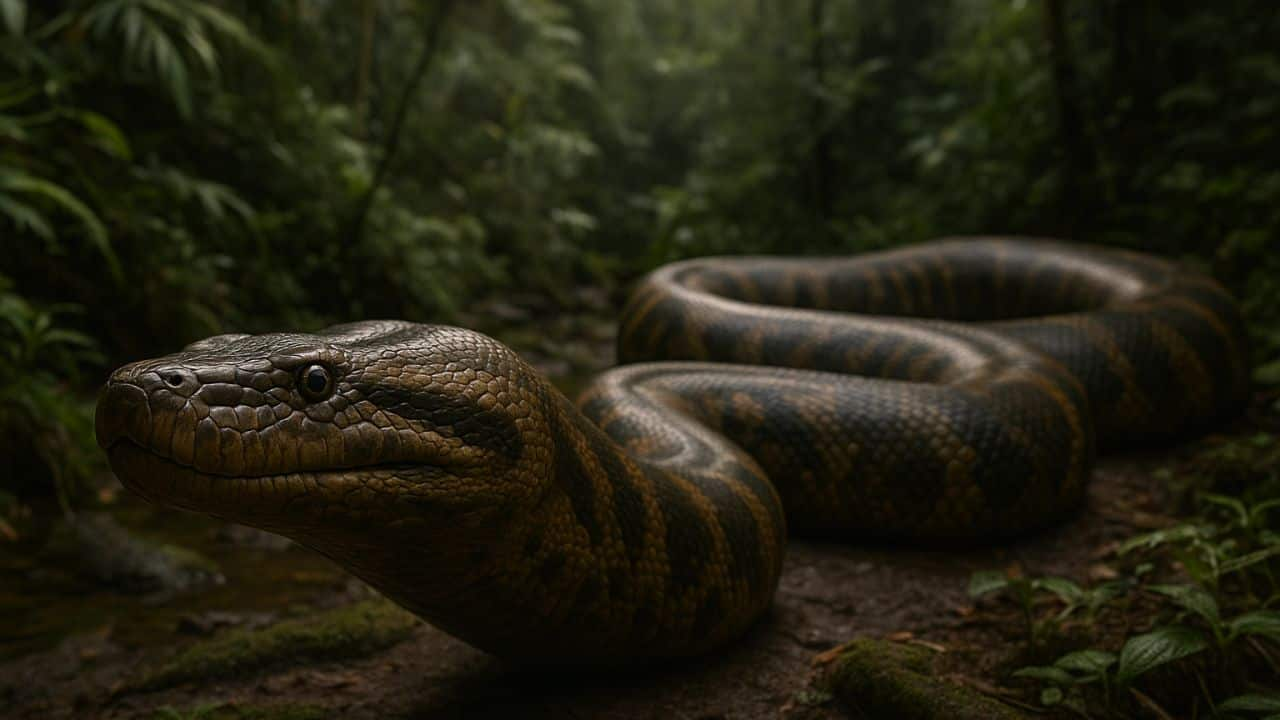
Meet Titanoboa: Long before people, a gigantic snake dominated the tropics. Welcome to Titanoboa's prehistoric world—the biggest snake ever found. (Image: AI)
Titanoboa's Size: Titanoboa measured up to 50 feet long and weighed more than a ton—longer than a school bus and more than a horse. (Image: @Declan_UAlberta/X)
When It Lived: Titanoboa existed about 60 million years ago, soon after the dinosaurs had become extinct, during the Paleocene epoch. (Image: @11Viper0/X)
Where It Was Found: Fossils of Titanoboa were found in a coal mine in Colombia, buried deep in the Cerrejón Formation of South America. (Image: @11Viper0/X)
Tropical Hunter: Titanoboa lived in sweltering, swampy jungles. Its enormous size indicates Earth's climate was much warmer at the time than it is now. (Image: AI)
What It Ate: This huge snake probably preyed on big fish and possibly crocodiles. Its massive jaws would crush prey in a single killing blow. (Image: AI)
A Relative of Boas: Titanoboa was a member of the boa family. Although it was not poisonous, it killed through constriction, crushing its victim in its coils. (Image: @Princess_Ariya/X)
Why It Matters: Titanoboa gives scientists clues about what prehistoric climates and ecosystems were like. Its existence revised our knowledge about life after the dinosaurs on Earth. (Image: @as_actualidad/X)
Museum Display: A life-sized Titanoboa model was produced for museums, amazing visitors with its enormity and snake-like presence. (Image:@NoticiasCaracol/X)
Giant's Legacy: Titanoboa exists no more, yet its fossil legacy reminds us with a shudder: once, nature hatched monsters beyond our wildest imaginations.(Image: @luisanibalbeni)
Discover the latest Business News, Sensex, and Nifty updates. Obtain Personal Finance insights, tax queries, and expert opinions on Moneycontrol or download the Moneycontrol App to stay updated!









